UNIVERSAL 4796L SMTpart

Product Detailed
.
Component ID: This is a unique name that identifies the component. All references to the component use this name.
.
Component Type: The component type is a predefined category into which a component belongs. An "OTHER" category is provided for components that don't belong to any of the predefined categories.
.
Shape: (radial) The shape defines the approximate configuration of the component body as viewed from the top.
.
Description: (optional) This field can be used to add any desired information about the component.
Body Information (sample Body Information data entry group)
.
Length: The dimension of any rectangular component body parallel to the leads as viewed from the top. (all axial and some radial components)
.
Diameter: The dimension of the component body parallel to the plane of the leads as viewed from the top. (circular radial components)
.
Width: The dimension of the component body perpendicular to the leads or the plane of the leads. For axial components this is the same as the body diameter. This field is not enabled for circular radial components.
.
Height: The distance from the board to the top of the component body. For axial components this is the same as the width.
Lead Info (sample Lead Information data entry group)
47146304 Rev. A New Component
. Lead Diameter: The diameter of the lead.
. Default Hole Span: (axial) The center to center distance between the insertion holes. This value represents the most common hole span for this component. The hole span can be changed for individual insertions in the Insertion List window.
. Default Anvil Span: (axial) Typically, this value is the same as the default hole span. If shorter or longer leads are required, an anvil span offset can be defined for individual insertions in the Insertion List window.
. Default Squeeze Value: (axial except Jumper Wire) Some component leads tend to spring out of shape during insertion. A squeeze value counteracts this tendency and increases insertion reliability. Except for steel leaded components this field is typically zero.
. Number of Leads: (radial) The number of leads on the component.
. Lead Span: (radial) The center to center distance between the insertion holes.
TECHNICAL PUBLICATIONS
New Component 47146304 Rev. A
Dispense Head Info (sample Dispense Head Information data entry group) . Default Dispense Head: This defines the type of dispense head most commonly used to dispense this component. . Default Orientation: This value defines the orientation of the component in the dispense head. If No Polarity is selected, it does not matter which way the component is inserted in the board, and thus it does not matter which orientation the component is loaded in the dispense head. Verifier Info: Described in the ERV (Expanded Range Verifier) documen-tation. Create a Component Definition This procedure explains how to create a new component definition. Since data fields differ based on component type, detailed information is not pro-vided here. Refer to machine specific documentation for details. To create a new component definition: 1. From the Product Editor window, select the Components menu bar heading. 2. Select the Database menu option. The Component Database window is displayed. 3. From the Component Database window, select the Component menu bar heading. 4. Select the Add menu option. The Select Component Type dialog box is displayed.
TECHNICALP UBLICATIONS
47146304 Rev. A New Component
Component 5. Select the component type or category of the new component from the Component Types list box. 6. Select OK. The General Information data entry group of the New Component window is displayed. The cursor is positioned in the Com-ponent ID data field. 7. Enter a component ID. 8. Push [Tab] to move to the next field. 9. As the cursor moves to each data field, enter the appropriate data. Valid entries or a valid range of values are displayed in the Valid En-tries list box at the right of the window. For specific component infor-mation, refer to the machine specific information and the component manufacturer's specifications. All data fields must be filled except the Description field in the General Information data entry group. However, if zero is a valid choice for a data field and no value is entered, the Product Editor automatically en-ters a zero. 10. When all data fields have been filled, select the Component menu bar heading. 11. Select the Save menu option. A message indicate the component defi-nition was successfully saved. The component is now available in the database for use in products. Use the Component menu bar heading to select options for manipulating component definitions. The following options are available. . Save . Save As . Delete
TECHNICAL PUBLICATIONS
New Component 47146304 Rev. A
. Print Save Use the Save option to save the current component definition to memory. To save a component definition: 1. Select the Component menu bar heading. 2. Select the Save menu option. A message indicates a successful save. Save As Use the Save As option to save the current component definition under a dif-ferent name. If the component definition has been saved before, the Save As option retains the original. To save a component definition under a new name: 1. Select the Component menu bar heading. 2. Select the Save As menu option. The Save Component As dialog box is displayed. 3. Enter the new name in the Component Name data field. 4. Select OK. A message indicates the component was successfully saved. Delete Use the Delete option to remove the open component definition from the component database.
TECHNICALP UBLICATIONS
47146304 Rev. A New Component
Goto Exit To delete the open component definition: 1. Select the Component menu bar heading. 2. Select the Delete menu option. A confirmation message is displayed. 3. Select Yes to delete the component definition from the component da-tabase. A message indicates the component was successfully deleted. 4. Select OK. Print Use the Print option to print the entire component definition to the default printer. Use the Goto menu bar heading to select options to move around in the com-ponent definition. When selected, each menu option displays the selected data entry group in the New Component window. Since component types may contain different data entry fields or even groups, the groups are not listed here. Refer to machine specific documentation for details. Use the Exit menu bar heading to close the New Component window.
Changes To This Revision
Updated to rev. A.
Page 2: Added period to second item in bullet list.
Page 5: Create a Component Definition, "Refer to machine specific documentation for
details" was "Refer to machine specific documentation for d".
Page 5: Added Verifier Info: Described in the ERV (Expanded Range Verifier)
documentation.
Release at FR status.

